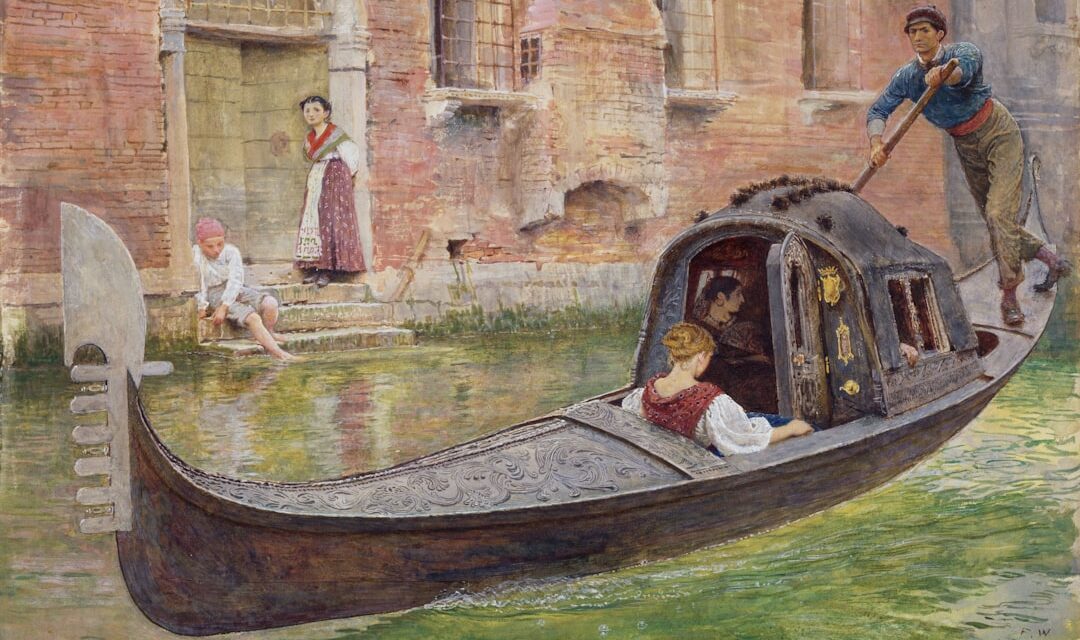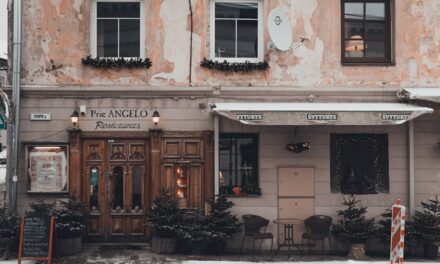Pieter Bruegel the Younger, a prominent figure in the realm of Flemish art, is often overshadowed by the towering legacy of his father, Pieter Bruegel the Elder. Born in 1564, he was a painter and printmaker whose works encapsulated the essence of 16th-century life in the Low Countries. While he is frequently regarded as a copyist of his father’s masterpieces, Bruegel the Younger carved out his own niche within the art world, producing a body of work that reflects both his lineage and his unique perspective.
His paintings are characterised by their vibrant depictions of peasant life, intricate landscapes, and a keen observation of human behaviour, making him a significant figure in the evolution of genre painting. Bruegel the Younger’s art serves as a bridge between the Renaissance and Baroque periods, showcasing a transition in style and subject matter that would influence generations of artists. His ability to capture the nuances of everyday life, combined with a flair for storytelling through visual means, has ensured that his works remain relevant and appreciated even today.
This article delves into the life, influences, themes, techniques, and legacy of Pieter Bruegel the Younger, illuminating his contributions to the rich tapestry of Flemish art.
Summary
- Pieter Bruegel the Younger was a Flemish painter known for his detailed and colourful copies of his father’s work.
- He was born in 1564 in Brussels and trained under his grandmother and later his father’s assistant, Pieter Goetkint.
- Pieter Bruegel the Elder’s influence on his work is evident in his choice of subjects, such as peasant life and landscapes.
- His paintings often depicted scenes of village life, proverbs, and biblical stories, showcasing his skill in capturing everyday life.
- Pieter Bruegel the Younger’s works are known for their meticulous attention to detail and vibrant colours, making them highly sought after by collectors.
Early Life and Education of Pieter Bruegel the Younger
Pieter Bruegel the Younger was born in Brussels, a city that was a vibrant hub of artistic activity during the late 16th century. The son of Pieter Bruegel the Elder and Mayken Coecke, he was immersed in an environment steeped in creativity from an early age. His father’s influence was profound; Bruegel the Elder was not only a celebrated painter but also a member of the Guild of Saint Luke, which provided a network for artists to learn and grow.
Following his father’s untimely death in 1569, young Pieter was likely thrust into a world where he had to navigate both his artistic ambitions and the legacy left behind by his father. Bruegel the Younger’s formal education in art is somewhat obscure, but it is widely believed that he trained under various masters in Antwerp, where he honed his skills in painting and printmaking.
His exposure to the works of contemporaries such as Hans Holbein and the emerging Baroque style would have played a crucial role in shaping his artistic voice. By the time he began to establish himself as an artist in his own right, he had already developed a distinctive style that would set him apart from his father’s legacy.
The Influence of Pieter Bruegel the Elder on His Work
The shadow of Pieter Bruegel the Elder looms large over his son’s oeuvre. The elder Bruegel was renowned for his detailed landscapes and depictions of peasant life, themes that would become central to Pieter the Younger’s work as well. While some critics dismiss him as merely a copyist, it is essential to recognise that Bruegel the Younger did not simply replicate his father’s compositions; rather, he reinterpreted them through his own lens.
This reinterpretation allowed him to explore similar themes while infusing them with contemporary relevance. Bruegel the Younger’s works often echo the compositions and motifs found in his father’s paintings, yet they also reflect a shift towards more commercial viability. He produced numerous copies and variations of his father’s most famous pieces, such as “The Peasant Wedding” and “The Tower of Babel.” These reproductions were not mere imitations; they were adaptations that catered to the tastes of collectors and patrons of his time.
By doing so, he ensured that his father’s legacy endured while simultaneously establishing his own reputation as an artist capable of engaging with complex themes through familiar imagery.
Themes and Subjects in Pieter Bruegel the Younger’s Art
The thematic focus of Pieter Bruegel the Younger’s work is deeply rooted in the everyday experiences of peasant life. His paintings often depict scenes of rural activities, festivals, and communal gatherings, capturing the vibrancy and struggles of ordinary people. This emphasis on genre scenes reflects a broader trend in Flemish art during the late 16th century, where artists began to shift their focus from religious subjects to more secular themes.
Bruegel’s ability to portray human emotion and interaction within these settings adds depth to his work, inviting viewers to engage with the narratives unfolding before them. In addition to peasant life, Bruegel the Younger frequently explored moralistic themes through allegorical representations. His works often contain subtle social commentary on human behaviour, folly, and vice.
For instance, paintings like “The Fight Between Carnival and Lent” illustrate the tension between indulgence and restraint, encapsulating societal values in a visually compelling manner. This duality—celebration intertwined with caution—reflects not only Bruegel’s keen observation of human nature but also serves as a mirror to the societal norms of his time.
Techniques and Style of Pieter Bruegel the Younger
Pieter Bruegel the Younger’s artistic style is characterised by meticulous attention to detail and a vibrant colour palette that brings his scenes to life. His technique often involved layering paint to create depth and texture, allowing for intricate depictions of clothing, landscapes, and facial expressions. This attention to detail is particularly evident in his portrayal of crowds; each figure is imbued with individuality, contributing to the overall narrative of the scene.
Moreover, Bruegel’s compositions are notable for their dynamic arrangements. He often employed diagonal lines and varied perspectives to create a sense of movement within his paintings. This technique not only draws viewers into the scene but also encourages them to explore every corner of the canvas.
The interplay between figures and their environment is masterfully executed, showcasing Bruegel’s ability to harmonise human activity with natural surroundings. His style reflects both an adherence to traditional Flemish techniques and an innovative approach that would influence future generations of artists.
Notable Works of Pieter Bruegel the Younger
The Peasant Wedding: A Celebration of Joy
One such work is “The Peasant Wedding,” which captures a lively celebration filled with joy and camaraderie. The painting is rich in detail, from the expressions on the faces of the guests to the intricate patterns on their clothing.
A Masterclass in Visual Storytelling
This piece exemplifies Bruegel’s ability to convey emotion through visual storytelling while remaining true to his father’s original vision. Another notable work is “The Tower of Babel,” which showcases Bruegel’s fascination with architectural grandeur and human ambition.
Themes of Collaboration and Chaos
In this painting, he depicts an enormous tower reaching towards the heavens, symbolising humanity’s desire for greatness while simultaneously hinting at its folly. The intricate details of the construction process and the diverse array of figures working together highlight both collaboration and chaos—a theme that resonates throughout much of Bruegel’s oeuvre.
Reception and Legacy of Pieter Bruegel the Younger’s Art
The reception of Pieter Bruegel the Younger’s art has evolved over time. Initially regarded as a skilled copyist who perpetuated his father’s legacy, contemporary scholars have come to appreciate his contributions as an artist in his own right. His ability to adapt and reinterpret themes from his father’s work while infusing them with contemporary relevance has garnered recognition for its artistic merit.
Today, art historians acknowledge that Bruegel the Younger played a crucial role in preserving and disseminating his father’s legacy while simultaneously establishing his own identity within Flemish art. Bruegel’s legacy extends beyond his own lifetime; he influenced subsequent generations of artists who sought to capture everyday life through their work. His focus on genre scenes paved the way for later movements such as Dutch Golden Age painting, where artists like Jan Steen and Frans Hals would further explore similar themes.
The enduring appeal of Bruegel’s work lies not only in its aesthetic qualities but also in its ability to resonate with viewers across centuries.
Pieter Bruegel the Younger’s Contribution to Flemish Art
Pieter Bruegel the Younger’s contribution to Flemish art cannot be overstated. He played an instrumental role in popularising genre painting during a time when such subjects were gaining prominence within European art. By focusing on everyday life rather than solely religious or mythological themes, he helped shift artistic priorities towards more relatable narratives that resonated with broader audiences.
Moreover, Bruegel’s ability to blend humour with social commentary set him apart from many of his contemporaries. His works often contain layers of meaning that invite viewers to reflect on their own lives while engaging with universal themes such as community, folly, and morality. This duality enriches his contributions to Flemish art by providing both entertainment and insight—a balance that continues to captivate audiences today.
Comparisons with Other Artists of His Time
When comparing Pieter Bruegel the Younger with other artists of his time, it becomes evident that he occupies a unique position within the Flemish art scene. While contemporaries like Rubens and van Dyck were primarily focused on grand historical or religious subjects characterised by dramatic compositions and rich colour palettes, Bruegel’s emphasis on everyday life set him apart from these Baroque giants. His works reflect a more intimate understanding of human experience, prioritising narrative over spectacle.
Brouwer’s works often leaned towards darker themes infused with moral lessons about vice and folly, while Teniers focused on idyllic representations of rural life devoid of deeper social commentary. In contrast, Bruegel’s ability to weave complex narratives into seemingly simple scenes showcases his distinctive voice within this vibrant artistic milieu.
The Market for Pieter Bruegel the Younger’s Art
The market for Pieter Bruegel the Younger’s art has experienced fluctuations over time but remains robust due to ongoing interest from collectors and institutions alike. During his lifetime, he capitalised on demand for copies of his father’s works while also producing original pieces that appealed to contemporary tastes. This commercial savvy allowed him not only to sustain himself as an artist but also ensured that his works reached a wide audience.
In recent years, there has been a resurgence in interest surrounding Bruegel’s oeuvre as scholars continue to uncover new insights into his life and work. Auctions featuring his paintings often attract significant attention from collectors eager to acquire pieces that embody both historical significance and artistic merit. As museums expand their collections with works by lesser-known artists like Bruegel the Younger, appreciation for his contributions continues to grow within both academic circles and popular culture.
Visiting Museums and Galleries to See Pieter Bruegel the Younger’s Art
For those interested in experiencing Pieter Bruegel the Younger’s art firsthand, several museums and galleries house notable works by this esteemed artist. The Museum Mayer van den Bergh in Antwerp boasts an impressive collection that includes some of his most celebrated pieces alongside works by other Flemish masters. Visitors can immerse themselves in an environment rich with history while gaining insight into Bruegel’s artistic journey.
Additionally, institutions such as The National Gallery in London feature works attributed to him or inspired by his style within broader exhibitions dedicated to Flemish art. These venues provide opportunities for art enthusiasts to engage with Bruegel’s legacy while exploring how he fits into larger narratives surrounding European art history. Whether through dedicated exhibitions or permanent collections showcasing genre painting from this period, experiencing Bruegel’s work in person offers invaluable insights into both his artistry and cultural significance.
In conclusion, Pieter Bruegel the Younger stands as a pivotal figure within Flemish art history whose contributions extend far beyond mere imitation of his father’s legacy. Through careful exploration of themes related to everyday life infused with social commentary alongside innovative techniques that captivated audiences during his time—and continue doing so today—Bruegel has secured himself an enduring place among great artists throughout history.
For those interested in the systematic approach to art, this article provides a detailed guide on using grids for photorealistic accuracy in artwork. Understanding proportions in figurative sculpture is also crucial, as discussed in another article on the website. Additionally, for those intrigued by the simplicity and zen of Japanese Sumi-e painting, this article delves into the unique art form. These articles offer valuable insights into different artistic techniques and styles that can enhance one’s understanding and appreciation of art.



